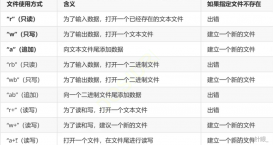想了解上一篇文章內容的小伙伴可點擊 C++20 特性 協程 Coroutines (1)
談到什么是協程. 并且介紹了 co_yield 和 co_return 的作用. 這篇來介紹一下 co_await.
1、co_await
一個形如:
|
1
|
co_await awaitable |
的表達式就叫一個 await-expression. co_await 表達式是用來暫停當前協程的運行, 轉而等待 awaitable 的結果. 然后 awaitable 進行計算, 最終返回一個 awaiter 結構用來告訴 co_await 要做什么.
co_await 所在的函數塊本身就是協程, 所以這個 co_await 也得配上一個 promise 和一個 coroutine_handle. 就像上篇文章里面 generator 類之類的東西.
這個 awaitable 可以是很多東西, 首先會檢查 promise 有沒有提供 await_transform 函數, 如果有就會用上, 沒有就不管.
(只要提供了任何一個 await_transform, 那么每一個 awaitable 都需要找到適合它的重載, 否則就會報錯. 庫的實現者可以通過 await_transform 接口來限制哪些 awaitable 可以用在協程之中. 參見https://stackoverflow.com/q/65787797/14406396 )
之后的話, 會查找 operator co_await 這個函數, 預期這個 operator 返回一個 awaiter.已經是一個 awaiter 了.
2、awaiter 的三個接口用途
一個 awaiter 需要實現三個接口 await_ready() , await_suspend(std::coroutine_handle<P>) , await_resume() .
只要實現了這三個接口的東西就是 awaiter.
await_ready() 告訴 co_await 自己好了沒.
await_suspend(h) 可以選擇返回 void , bool , std::coroutine_handle<P> 之一. h 是本協程的 handle. P是本協程的 promise 類型 (或者是 void, 見第三篇中的解釋).
如果 await_ready() 返回 false , 這個協程就會暫停. 之后:
-
如果
await_suspend(h)返回類型是 std::coroutine_handle<Z>, 那么就會恢復這個 handle. 即運行await_suspend(h).resume(). 這意味著暫停本協程的時候, 可以恢復另一個協程. -
如果
await_suspend(h)返回類型是 bool, 那么看 await_suspend(h) 的結果, 是 false 就恢復自己. -
如果
await_suspend(h)返回類型是 void, 那么就直接執行. 執行完暫停本協程.
如果 await_ready() 返回 true 或者協程被恢復了, 那么就執行 await_resume() , 它得到的結果就是最終結果.
所以說, 這await_ready, await_suspend, await_resume 三個接口分別表示 "有沒有準備好", "停不停", "好了該咋辦". 設計還是很自然的.
C++ 的協程是非對稱協程, 是有一個調用/被調用的關系的. 一個協程被某個東西喚醒了, 那么它下次暫停的時候, 就會把控制流還給那個喚醒它的東西. 所以 C++ 的協程完全可以看作是一個可重入的函數.
3、協程用法的回顧
再來看上一篇文章中的偽代碼
|
1
2
3
4
5
6
7
8
9
10
11
12
13
14
|
{promise-type promise(promise-constructor-arguments); try { co_await promise.initial_suspend(); // 創建之后 第一次暫停 function-body // 函數體} catch ( ... ) { if (!initial-await-resume-called) throw; promise.unhandled_exception(); }final-suspend:co_await promise.final_suspend(); // 最后一次暫停} |
catch 塊里面出現的 !initial-await-resume-called 就是指 promise.initial_suspend() 返回的那個 await_resume() 有沒有被執行過.
如果執行了, 那么這個 flag 就會立刻變成 true. 然后調用 promise.unhandled_exception() 來處理異常.
一個例子:
由于 co_await 對這三個東西的應該做什么沒有做任何限制, 所以可以用來實現很多功能.
舉個例子 (來自標準庫), 比如我們想要設計一個協程, 能夠停下任意的正時長, 就可以這樣設計:
|
1
2
3
4
5
6
7
8
9
10
11
12
13
14
15
16
|
template <class Rep, class Period>auto operator co_await(std::chrono::duration<Rep, Period> d) // operator co_await{ struct awaiter { std::chrono::system_clock::duration duration; awaiter(std::chrono::system_clock::duration d) : duration(d) {} bool await_ready() const { return duration.count() <= 0; } int await_resume() { return 1; } void await_suspend(std::coroutine_handle<> h) { std::this_thread::sleep_for(duration); } }; return awaiterldzjh9fvzrv3;} |
這樣的話, 如果輸入一個正的時間, 就會調用 await_suspend() 進行暫停了. 如果輸入的時間是負的, 那就通過 await_ready() 返回 true 繞過了這個過程.
當然, 調用它需要在一個協程中, 也就意味著需要一個 promise 和 coroutine_handle 包裝類的配合. 像這樣
|
1
2
3
4
5
6
7
8
9
10
11
12
13
14
15
16
17
18
19
20
21
22
23
24
|
struct my_future{ struct promise_type; using handle = std::coroutine_handle<promise_type>; struct promise_type { int current_value; auto initial_suspend() { return std::suspend_always{}; } auto final_suspend() { return std::suspend_always{}; } void unhandled_exception() { std::terminate(); } /* ... */ }; /* ... */private: my_future(handle h) : coro(h) {} handle coro;};my_future sleep_coro(){ printf("Start sleeping\n"); int ans = co_await 1s; printf("End sleeping, with ans = %d\n", ans);} |
當然, 一個函數也可以放在 co_await 的右邊, 就像 co_await g(); 只要返回的結構里面有那三個 await_* 接口就行. 甚至你可以直接 co_await std::suspend_always{};
下面是協程流控的細致分析.
|
1
2
3
4
5
6
7
8
9
10
11
12
13
14
15
16
17
18
|
int main(){ auto h = sleep_coro(); // 這一步創建協程, 在 co_await initial_suspend 處, 執行完 await_ready, await_suspend. 返回 main// 注意 initial_suspend 返回的是 std::suspend_always{}// 所以是一定暫停, 并且 resume 的時候什么都不做 h.resume();// 這一步執行上一個 await_resume 以后(什么都不做), 執行了 printf("Start sleeping\n");// 然后收到 co_await 1s 返回的結構, 其中 await_suspend 里面需要暫停.// 然后執行完 await_ready, await_suspend (在這個函數里暫停 1s), 返回 main h.resume();// 這一步執行完 await_resume 以后(初始化 ans = 1)// 執行了 printf("End sleeping, with ans = %d\n", ans);// 然后在 co_await final_suspend 處執行完 await_ready, await_suspend. 就返回 main} |
示列代碼見這里
到這里大家可以重新會到(1)去看看:C++20 特性 協程 Coroutines(1)
到此這篇關于C++20 新特性 協程 Coroutines(2)的文章就介紹到這了,更多相關C++20 協程 Coroutines內容請搜索服務器之家以前的文章或繼續瀏覽下面的相關文章希望大家以后多多支持服務器之家!
原文鏈接:https://zhuanlan.zhihu.com/p/349710180














